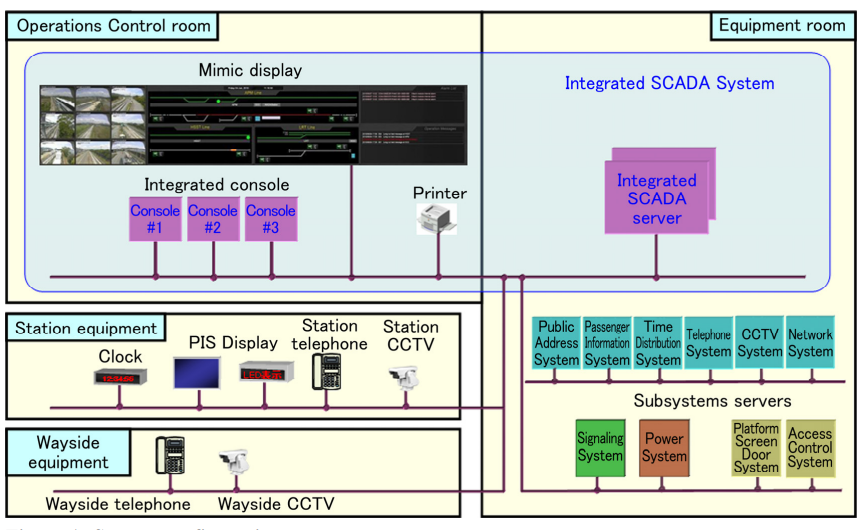In recent years, control facilities for industrial systems that integrate operation and maintenance
information have become increasingly required. A conventional control system is composed of
multiple independent subsystems, with a decentralized configuration that requires a special
operation terminal which has a different screen design and different operating instructions for each
subsystem. When used for a transportation system that handles a wide range of information, this
conventional decentralized configuration has disadvantages, such as a high probability of losing
time or making operational mistakes in an emergency response. Additionally, it takes time to
master the operations and maintenance of each subsystem.
The Integrated Supervisory Control and Data Acquisition (SCADA) system consolidates the
monitoring and control functions of these subsystems in one operation terminal, providing a user
platform which can be operated through an integrated human–machine interface (HMI).
The system configuration is shown in Figure 1. The Integrated SCADA system mainly
consolidates communication systems, including the following subsystems:
- Closed-circuit Television (CCTV) System
- Mimic Display System
- Public Address System
- Access Control System
- Passenger Information System
- Platform Screen Door System
- Telephone System
- Signaling System (train location)
- Time Distribution System
- Power System (traction power)
- Network System

Functions of the integrated SCADA system are mainly divided into two types: functions
common to all parts of the system, and subsystem functions for the monitoring and controlling of
individual subsystems. These functions are described below.
Common Functions
Common functions include user management, alarm and event management, and
historical data management. The user management function enables user registration and
assigns user rights for the monitoring and control of individual facilities by subsystems or by
stations, according to the jurisdiction of the controller. The alarm management function collects
alarms from all of the connected subsystems and provides an integrated alarm list. Filtering can
also be applied depending on various conditions, such as the location of the alarm, level of
severity, and type of subsystem. The historical data management function displays the alarm
and event history, various stored data logs, and trend charts.
Subsystem Functions
Subsystem functions monitor equipment status for the entire subsystem, as well as
display detailed information on individual equipment and their control. For example, subsystem
functions include selecting cameras for the CCTV System, image display, and pan/tilt/zoom
(PTZ) operation of the cameras. The Passenger Information System, such as the selection of the
display zones and message display, are integrated with SCADA.
The Public Address System and Telephone System are also integrated to include
announcement functions, the selection of announcement zones, and the receiving and making of
calls, which can all be handled on one operation terminal.
